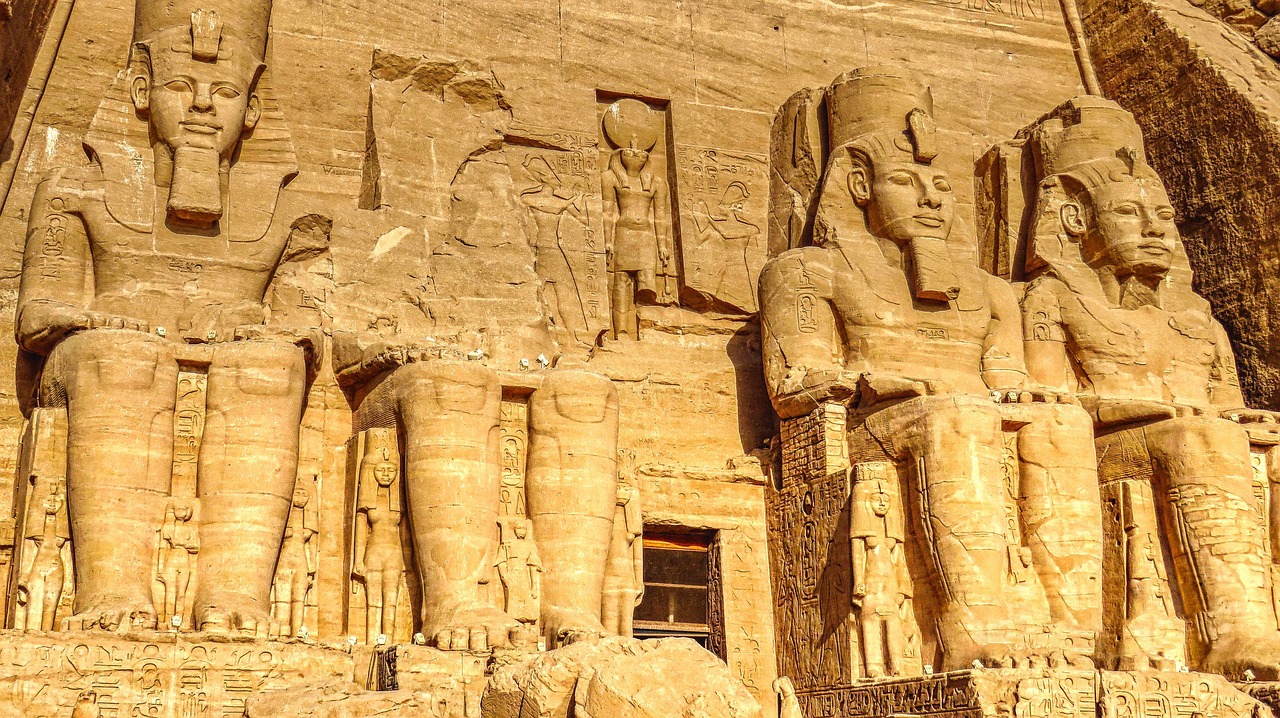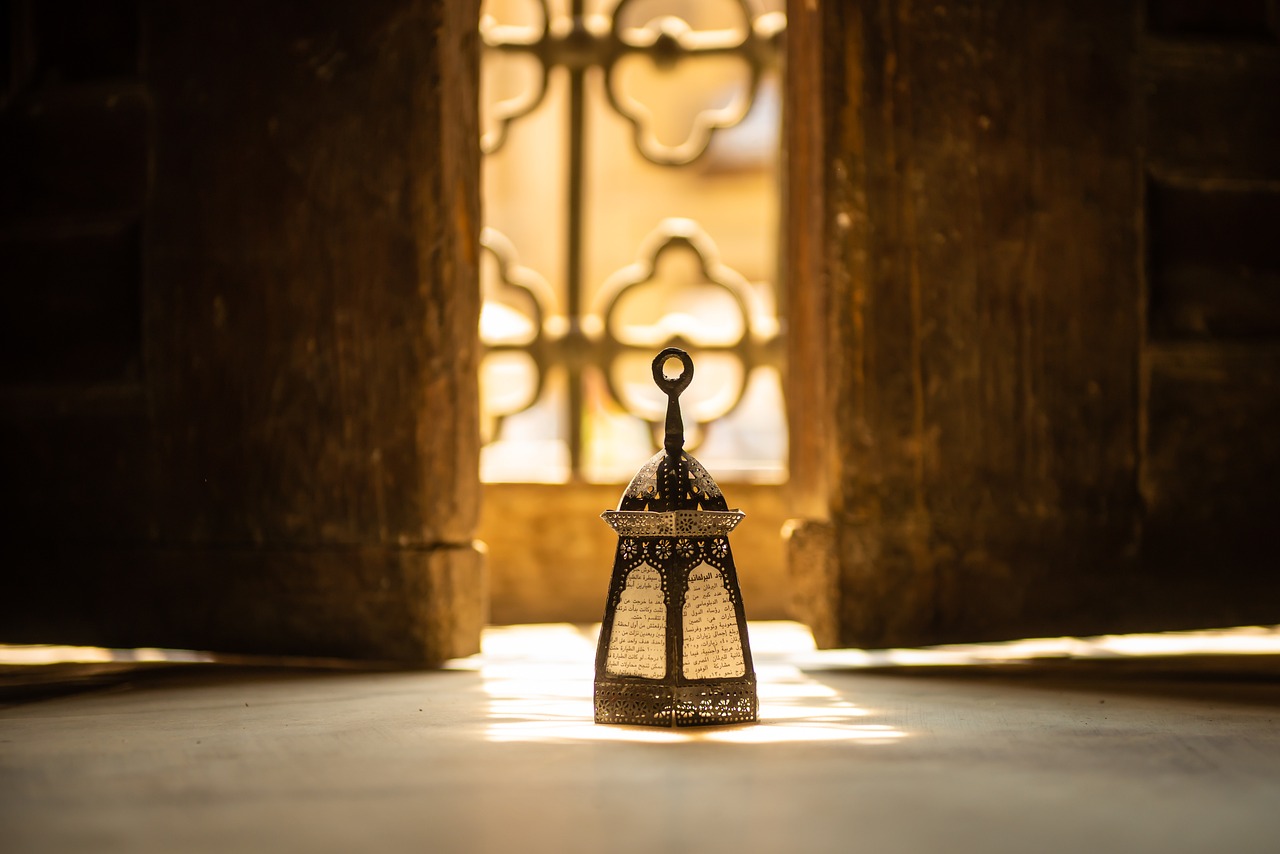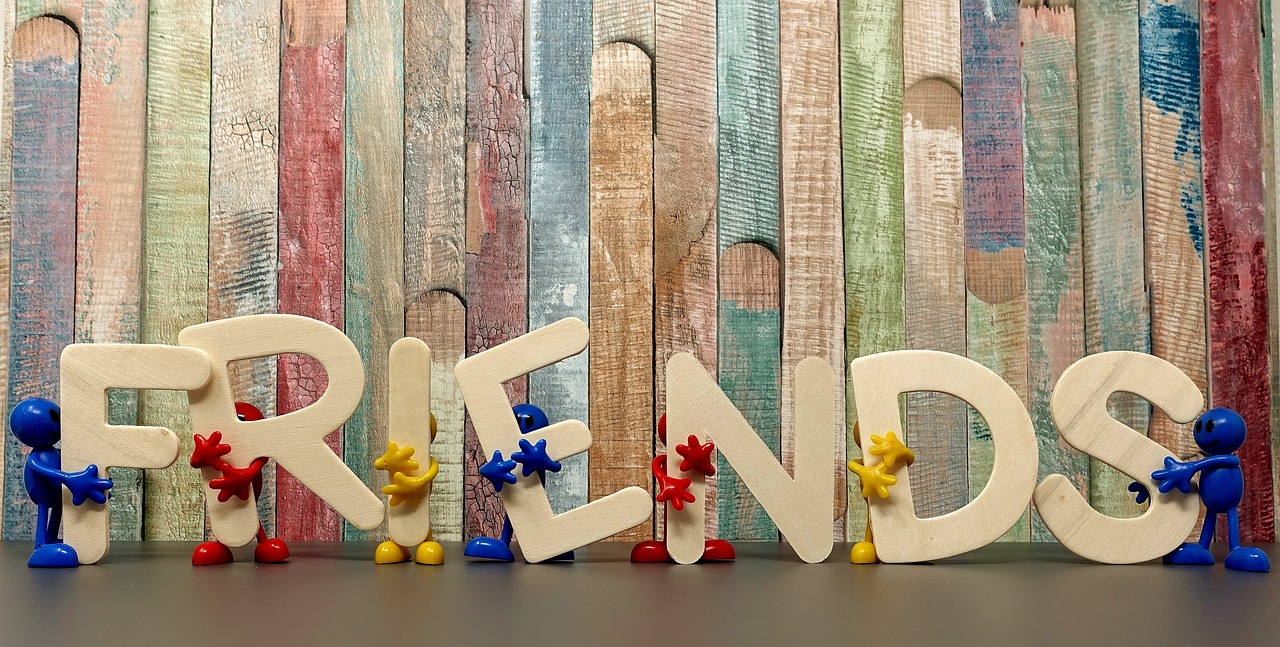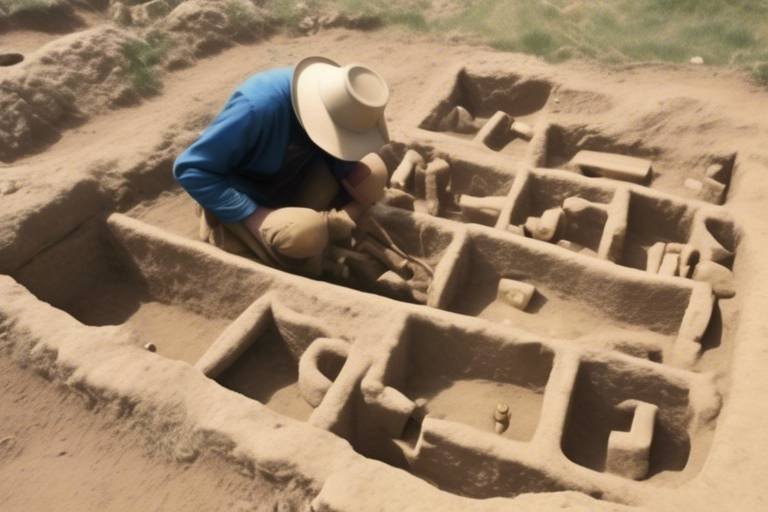The Legacy of the Ancient Egyptian Book of the Dead
The legacy of the Ancient Egyptian Book of the Dead is a captivating tale that spans centuries, leaving an indelible mark on art, culture, and religious beliefs. This ancient text, also known as the "Book of Coming Forth by Day," holds a mystical allure that continues to intrigue scholars and enthusiasts alike. Its enduring impact can be felt in various forms of artistic expression, from intricate illustrations to profound philosophical concepts.
Originating in the New Kingdom period of ancient Egypt, the Book of the Dead served a crucial purpose in guiding the deceased through the treacherous journey of the afterlife. It was believed to contain spells and instructions necessary for the soul to navigate the challenges of the underworld and reach the eternal paradise of the Field of Reeds.
Delving into the content and structure of the Book of the Dead reveals a complex tapestry of spells, incantations, and rituals designed to aid the deceased in their journey. Central to this ancient text is the renowned "Spell of Going Forth by Day," a powerful incantation that acted as a guide for the soul to traverse the realms of the afterlife successfully.
One of the most striking features of the Book of the Dead is its intricate illustrations and symbols, each laden with symbolic meaning and mystical significance. These vivid depictions not only served as aids for the deceased but also conveyed profound religious and philosophical ideas about the nature of existence and the afterlife.
The influence of the Book of the Dead extended beyond the spiritual realm, shaping ancient Egyptian funerary practices and religious beliefs. Priests and scribes played a crucial role in the creation and use of these sacred texts, ensuring that the deceased received the proper guidance and protection needed for their journey into the afterlife.
Furthermore, the Book of the Dead offers a glimpse into the ancient Egyptian conception of the afterlife, depicting a complex cosmology of gods, judgment scenes, and the eternal cycle of life and death. These beliefs underscored the importance of moral conduct and spiritual purity in the journey towards eternal bliss.
In the modern world, the legacy of the Book of the Dead endures, inspiring artists, writers, and filmmakers to explore its themes in contemporary art, literature, and popular culture. Its mystical allure and timeless wisdom continue to captivate audiences, bridging the gap between ancient traditions and modern interpretations.

Origins and Purpose
The Ancient Egyptian Book of the Dead, also known as "The Book of Coming Forth by Day," holds a profound legacy that has transcended time and continues to captivate scholars and enthusiasts alike. Originating in the New Kingdom period of ancient Egypt, this funerary text served a crucial purpose in guiding the deceased through the perilous journey of the afterlife. The primary aim of the Book of the Dead was to provide the deceased with the necessary knowledge and spells to navigate the complex realms of the underworld and reach the eternal paradise of the Field of Reeds.

Content and Structure
The Ancient Egyptian Book of the Dead, a remarkable ancient text, is not just a mere book but a profound guide that transcends time, delving into the mysteries of life and death. Its content and structure are intricately woven, reflecting the deep beliefs and rituals of the ancient Egyptians. Within its pages lie spells, illustrations, and instructions that offer a glimpse into the journey of the deceased through the afterlife.
One of the most famous spells within the Book of the Dead is the 'Spell of Going Forth by Day,' a powerful incantation believed to assist the deceased in navigating the treacherous realms of the afterlife. This spell served as a beacon of hope, guiding souls towards a successful passage into the next life.
The illustrations and symbols found throughout the Book of the Dead are not mere decorations but profound representations of ancient Egyptian beliefs and cosmology. Each symbol holds a deeper meaning, intricately connected to the journey of the soul and the challenges it must overcome in the afterlife.
As one delves deeper into the content and structure of the Book of the Dead, a rich tapestry of ancient funerary practices and religious beliefs unfolds. The text served as a vital tool in guiding the deceased through the perilous journey of death, ensuring a safe passage into the realm of the gods.
Through the meticulous work of priests and scribes, the Book of the Dead was meticulously crafted and personalized for each individual, tailored to their specific needs and beliefs. These ancient custodians played a crucial role in preserving the traditions and rituals that upheld the ancient Egyptian concept of the afterlife.
Today, as we look back on the legacy of the Book of the Dead, we see its enduring influence in modern interpretations of art, literature, and popular culture. Its profound teachings continue to captivate and inspire, reminding us of the eternal quest for understanding the mysteries of life and death.

Spell of Going Forth by Day
The , also known as the Book of the Dead Spell 125, is one of the most renowned and crucial spells found within the Ancient Egyptian Book of the Dead. This spell was intended to assist the deceased in navigating the perilous journey through the afterlife and reaching the realm of the gods successfully. It acted as a guidebook, providing instructions and incantations to ensure a safe passage for the soul.
Central to this spell was the belief that the deceased's spirit, accompanied by various protective deities, had to pass through a series of challenges and obstacles in the underworld before emerging into the eternal realm. The was like a roadmap, equipping the departed with the necessary knowledge and power to overcome these trials and ultimately achieve a state of eternal bliss.
Illustrations accompanying this spell often depicted scenes of judgment before the gods, the weighing of the heart ceremony, and the final journey to the afterlife. These vivid visual representations served not only as aids for the deceased to understand the process but also as reminders of the consequences of their actions in life.
Moreover, the emphasized the importance of specific rituals and offerings that needed to be performed by the living on behalf of the deceased to ensure their well-being in the afterlife. It reinforced the interconnectedness between the living and the dead, highlighting the enduring bond that transcended the physical realm.
Through the , the Ancient Egyptians sought to provide comfort and assurance to the departed, offering them a path to eternal life and a chance to be reunited with their loved ones in the divine realm. This spell encapsulated the profound beliefs and intricate rituals that shaped their understanding of death and the afterlife, leaving a lasting legacy that continues to fascinate and inspire to this day.

Illustrations and Symbols
The found within the Ancient Egyptian Book of the Dead are not merely decorative elements but hold profound significance in understanding the beliefs and rituals of the ancient Egyptians. These intricate illustrations, often accompanied by hieroglyphs, depict a variety of scenes and symbols that were believed to assist the deceased on their journey through the afterlife. Each symbol was carefully chosen to convey specific meanings and provide guidance to the soul of the departed.
One of the most common symbols found in the Book of the Dead is the Ankh, representing life and immortality. This symbol, resembling a cross with a loop at the top, was believed to bestow eternal life upon the deceased. Another prevalent motif is the Eye of Horus, symbolizing protection, health, and royal power. The intricate details of these symbols, combined with the accompanying hieroglyphs, created a visual language that conveyed complex spiritual concepts and magical incantations.
Moreover, the illustrations within the Book of the Dead often depict scenes from Egyptian mythology, such as the weighing of the heart ceremony where the heart of the deceased is weighed against the feather of Ma'at, the goddess of truth and justice. These visual representations served not only as aids for the deceased but also as a form of storytelling that reinforced the moral and religious teachings of the ancient Egyptians.

Funerary Practices and Beliefs
Funerary practices and beliefs in ancient Egypt were deeply intertwined with the religious beliefs surrounding the afterlife, prominently guided by the teachings of the Book of the Dead. The Egyptians believed that death was not the end but rather a transition to the afterlife, where the deceased would embark on a journey to reach the Hall of Ma'at for judgment.
One of the central practices influenced by the Book of the Dead was the elaborate process of mummification. The preservation of the body was crucial as it was believed that the soul needed a recognizable vessel to return to in the afterlife. This process involved removing internal organs, embalming the body, and wrapping it in linen bandages.
Furthermore, funerary rites and rituals played a significant role in ensuring a successful passage to the afterlife. Priests and scribes had specific roles in performing these rituals and reciting the spells from the Book of the Dead to aid the deceased in their journey. The texts from the Book of the Dead were often inscribed on papyrus scrolls and placed in the tomb alongside the deceased.
Ancient Egyptians also believed in the existence of various deities and demons in the afterlife who would either assist or hinder the deceased on their journey. The spells and incantations in the Book of the Dead served as a guide to help navigate through these challenges and ensure a safe passage to the realm of Osiris, the god of the afterlife.
The intricate funerary practices and beliefs surrounding death in ancient Egypt reflect a profound reverence for the afterlife and a meticulous preparation for the journey beyond. The legacy of these practices, influenced by the teachings of the Book of the Dead, continues to captivate and intrigue scholars and enthusiasts alike, shedding light on the rich tapestry of ancient Egyptian culture and beliefs.

Role of Priests and Scribes
The in ancient Egypt was paramount in the creation and use of the Book of the Dead for funerary rituals. Priests were highly trained individuals who conducted religious ceremonies and performed rituals to ensure the safe passage of the deceased into the afterlife. They were responsible for reciting the spells and incantations from the Book of the Dead during the burial process, guiding the soul through the perilous journey to the realm of the dead.
Scribes, on the other hand, played a crucial role in the production of the Book of the Dead. These skilled individuals meticulously copied the spells, illustrations, and instructions onto papyrus scrolls, ensuring the accuracy and integrity of the sacred text. Scribes were considered to possess divine knowledge and were highly respected for their ability to preserve the wisdom and teachings of the ancient Egyptians for future generations.
Working together, priests and scribes collaborated to ensure that the deceased received the proper guidance and protection needed to navigate the afterlife successfully. Their dedication to preserving the traditions and beliefs of ancient Egyptian culture through the Book of the Dead highlights the importance of their roles in facilitating the spiritual journey of the departed.

Afterlife Concepts
When delving into the depicted in the Ancient Egyptian Book of the Dead, one is met with a rich tapestry of beliefs and rituals that shaped the civilization's view of the beyond. Central to these concepts was the idea of judgment in the afterlife, where the heart of the deceased was weighed against the feather of Ma'at, the goddess of truth and justice. This symbolic weighing determined whether the individual was worthy of entering the eternal paradise of the Field of Reeds or faced the terrifying prospect of eternal oblivion.
Moreover, the Book of the Dead outlined various trials and challenges that the deceased had to overcome on their journey through the underworld. These included navigating treacherous rivers, avoiding malevolent spirits, and reciting the correct spells and incantations to ward off evil forces. The text provided a roadmap for the soul's journey, offering guidance and protection in the perilous realm of the dead.
Additionally, the concept of resurrection and eternal life was a prominent theme in ancient Egyptian afterlife beliefs. The Book of the Dead emphasized the cyclical nature of existence, with death seen as a transition rather than an endpoint. Through the performance of funerary rites and the recitation of spells, the deceased could hope to achieve a state of eternal bliss and reunite with their loved ones in the afterlife.

Modern Interpretations and Pop Culture
Over the centuries, the Ancient Egyptian Book of the Dead has not only captivated scholars and historians but has also found its way into modern interpretations and pop culture. Its mystical allure and rich symbolism continue to inspire artists, writers, and filmmakers around the world.
One of the most notable modern interpretations of the Book of the Dead can be seen in the realm of literature. Many authors have drawn inspiration from the ancient text, incorporating its themes of death, rebirth, and the afterlife into their works. The concept of guiding the soul through a perilous journey resonates with audiences, adding depth and mystery to storytelling.
In the world of art, the intricate illustrations and symbols found within the Book of the Dead have served as a wellspring of creativity for contemporary artists. The vivid imagery depicting gods, demons, and the journey of the soul has been reimagined in various art forms, from paintings to sculptures, giving new life to ancient beliefs.
Moreover, popular culture has also embraced the mystique of the Book of the Dead. From blockbuster movies to video games, references to Egyptian mythology and the afterlife are prevalent, showcasing the enduring fascination with ancient civilizations and their rituals. The blend of history and fantasy in these modern interpretations sparks the imagination and invites audiences to explore the unknown.
Frequently Asked Questions
- What is the Ancient Egyptian Book of the Dead?
The Ancient Egyptian Book of the Dead is a collection of spells, illustrations, and instructions designed to guide the deceased through the afterlife. It served as a guidebook to help individuals navigate the challenges they would face in the underworld and ensure a successful journey to the afterlife.
- What was the primary purpose of the Book of the Dead?
The primary purpose of the Book of the Dead was to provide the deceased with the knowledge and protection needed to pass through the trials and judgment in the afterlife. It contained spells to help the soul overcome obstacles, rituals to ensure a safe passage, and guidance on how to reach the eternal paradise.
- How did the Book of the Dead influence ancient Egyptian funerary practices?
The Book of the Dead played a significant role in shaping ancient Egyptian funerary practices by providing a roadmap for the deceased to follow in the afterlife. It influenced the rituals performed during the burial process, the preparation of the body, and the beliefs about the soul's journey to the realm of the dead.
- What are some modern interpretations of the Book of the Dead?
In modern times, the Book of the Dead continues to inspire art, literature, and popular culture. Artists and writers draw upon its themes of life, death, and the afterlife to create new interpretations and adaptations that resonate with contemporary audiences.



















